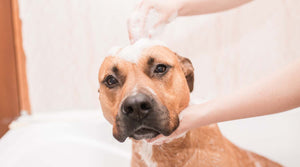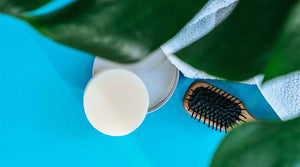Your Cart is Empty
💗FREE shipping on Oprah's Favorite Dog Walking Bag! Everything ships FREE on orders over $30 💗
💗FREE shipping on Oprah's Favorite Dog Walking Bag! Everything ships FREE on orders over $30 💗
💗FREE shipping on Oprah's Favorite Dog Walking Bag! Everything ships FREE on orders over $30 💗
💗FREE shipping on Oprah's Favorite Dog Walking Bag! Everything ships FREE on orders over $30 💗
Add description, images, menus and links to your mega menu
A column with no settings can be used as a spacer
Link to your collections, sales and even external links
Add up to five columns
Add description, images, menus and links to your mega menu
A column with no settings can be used as a spacer
Link to your collections, sales and even external links
Add up to five columns
December 13, 2019 4 min read
You probably noticed a while ago the growing number of choices when buying organic food for your fur baby. Everything from organic to all-natural to vegan to raw and seemingly everything in between! What's a dog mom or dog dad to do? Lately, those choices seem to be spreading to the grooming aisle as well. Is organic just code for expensive, or is it something you should pay more attention to? What do all those labels really mean?
Dog food labels
When it comes to food, our dogs are much like us. They do best on high quality foods made from clean ingredients that are combined in formulas that provide optimal nutrition for their specific makeup, size, and general health condition. Your pup's veterinarian should give guidance as to what makes most sense for their specific needs, but it's still important to understand the labels.
The Association of American Feed Control Officials (AAFCO) defines natural as “a feed or feed ingredient derived solely from plant, animal or mined sources…not having been produced by or subject to a chemically synthetic process and not containing any additives or processing aids that are chemically synthetic.”
Of course, a whole lot of substances are “derived from plant, animal or mines sources” but shouldn’t show up in dog food. In general, dog foods marketed as “natural” are free from corn, wheat, soy by-products, and artificial colors. But it’s important to read the label in full, as there isn’t actually regulation around using the “natural” label.
On the other hand, the term organic is certified by the United States Department of Agriculture. "USDA certified organic foods are grown and processed according to federal guidelines addressing, among many factors, soil quality, animal raising practices, pest and weed control, and use of additives. Organic producers rely on natural substances and physical, mechanical, or biologically based farming methods to the fullest extent possible.
Produce can be called organic if it’s certified to have grown on soil that had no prohibited substances applied for three years prior to harvest. Prohibited substances include most synthetic fertilizers and pesticides. In instances when a grower has to use a synthetic substance to achieve a specific purpose, the substance must first be approved according to criteria that examine its effects on human health and the environment (see other considerations in “Organic 101: Allowed and Prohibited Substances”).
As for organic meat, regulations require that animals are raised in living conditions accommodating their natural behaviors (like the ability to graze on pasture), fed 100% organic feed and forage, and not administered antibiotics or hormones.
When it comes to processed, multi-ingredient foods, the USDA organic standards specify additional considerations. Regulations prohibit organically processed foods from containing artificial preservatives, colors, or flavors and require that their ingredients are organic, with some minor exceptions. For example, processed organic foods may contain some approved non-agricultural ingredients, like enzymes in yogurt, pectin in fruit jams, or baking soda in baked goods.
When packaged products indicate they are “made with organic [specific ingredient or food group],” this means they contain at least 70% organically produced ingredients. The remaining non-organic ingredients are produced without using prohibited practices (genetic engineering, for example) but can include substances that would not otherwise be allowed in 100% organic products. “Made with organic” products will not bear the USDA organic seal, but, as with all other organic products, must still identify the USDA-accredited certifier. You can look for the identity of the certifier on a packaged product for verification that the organic product meets USDA’s organic standards.
As with all organic foods, none of it is grown or handled using genetically modified organisms, which the organic standards expressly prohibit (see Organic 101: What Organic Farming (and Processing) Doesn’t Allow).
Dog shampoo labels
If you see that a pet grooming product is USDA certified organic or made with all organic ingredients, the product's ingredients would have met the USDA food grade organic certification requirements as described above. We think that grooming products that are based on organic ingredients are worth the investment as dogs have skin that is much thinner, less acidic, and generally more sensitive than human skin! Did you know that dogs have only 3-5 layers of skin cells compared to the 10-15 layers that humans have? This means they are especially vulnerable to harsh chemicals and synthetic compounds.

The outermost layer of skin is called the stratum corneum, and it is protected by a thin layer called the acid mantle. The acid mantle is the first line of defense against contaminants such as viruses and bacteria. It also promotes hydration by absorbing water and reduces evaporation.
Bathing washes away the acid mantle. In order to counter this, shampoos and other cleansers are designed to help trap moisture and offer protection until the acid mantle has renewed itself.
When it comes to shampoo and other grooming products, it is very important to use dog shampoos and other cleansers that are specifically made for dogs. Just as human shampoos and soaps support rebuilding of the acid mantle in humans, dog shampoos are specially engineered to create a supportive environment for rebuilding of the acid mantle in dogs. It's very important that human shampoos are not used on dogs. Rather than support rebuilding of the acid mantle, human shampoos when used on a dog actually disrupt their acid mantle, leaving them without that first line of protection against viruses, bacteria, and parasites. This dries out their skin and leaves them feeling itchy and uncomfortable just like we humans feel in the winter. To make things even worse, the inevitable scratching by your dog creates a perfect environment for bacteria to enter via the broken skin.
Pup tip: Make sure your dog gets a proper rinse after being washed in order to remove all traces of shampoo. Shampoo left on their sensitive skin for too long would eventually also lead to irritation and disrupt the moisture balance of their skin. You're doing it right if the rinse takes longer than the shampoo! We like to keep our pups happy in the tub by treating them to peanut butter slathered on their favorite wall-mounted suction cup toy!



Comments will be approved before showing up.